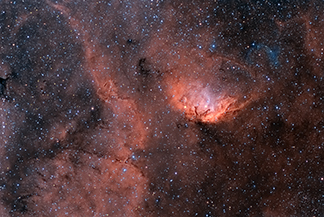

As part of an ongoing effort to map these sources, a survey was conducted in 1964 using two Aerobee suborbital rockets.

Cygnus X-1 was discovered using X-ray instruments that were carried aloft by a sounding rocket launched from White Sands Missile Range in New Mexico. However, because X-ray emissions are blocked by the Earth's atmosphere, observation of celestial X-ray sources is not possible without lifting instruments to altitudes where the X-rays can penetrate. Observation of X-ray emissions allows astronomers to study celestial phenomena involving gas with temperatures in the millions of degrees. 7 External links Discovery and observation.This hypothesis lacks direct empirical evidence but has generally been accepted from indirect evidence. He conceded the bet in 1990 after observational data had strengthened the case that there was indeed a black hole in the system. Ĭygnus X-1 was the subject of a friendly scientific wager between physicists Stephen Hawking and Kip Thorne in 1975, with Hawking betting that it was not a black hole. Hence the star may have instead collapsed directly into a black hole. If this star had then exploded as a supernova, the resulting force would most likely have ejected the remnant from the system. The majority of the star's mass was shed, most likely as a stellar wind. This system may belong to a stellar association called Cygnus OB3, which would mean that Cygnus X-1 is about five million years old and formed from a progenitor star that had more than 40 solar masses. A pair of jets, arranged perpendicularly to the disk, are carrying part of the energy of the infalling material away into interstellar space. Matter in the inner disk is heated to millions of degrees, generating the observed X-rays. A stellar wind from the star provides material for an accretion disk around the X-ray source. Ĭygnus X-1 belongs to a high-mass X-ray binary system, located about 6,070 light-years from the Sun, that includes a blue supergiant variable star designated HDE 226868 which it orbits at about 0.2 AU, or 20% of the distance from the Earth to the Sun. If so, the radius of its event horizon has 300 km "as upper bound to the linear dimension of the source region" of occasional X-ray bursts lasting only for about 1 ms. The compact object is now estimated to have a mass about 21.2 times the mass of the Sun and has been shown to be too small to be any known kind of normal star, or other likely object besides a black hole. It remains among the most studied astronomical objects in its class. It was discovered in 1964 during a rocket flight and is one of the strongest X-ray sources seen from Earth, producing a peak X-ray flux density of 2.3 ×10 −23 W m −2 Hz −1 ( 2.3 ×10 3 Jansky). Database references SIMBAD dataĬygnus X-1 (abbreviated Cyg X-1) is a galactic X-ray source in the constellation Cygnus and was the first such source widely accepted to be a black hole.


 0 kommentar(er)
0 kommentar(er)
